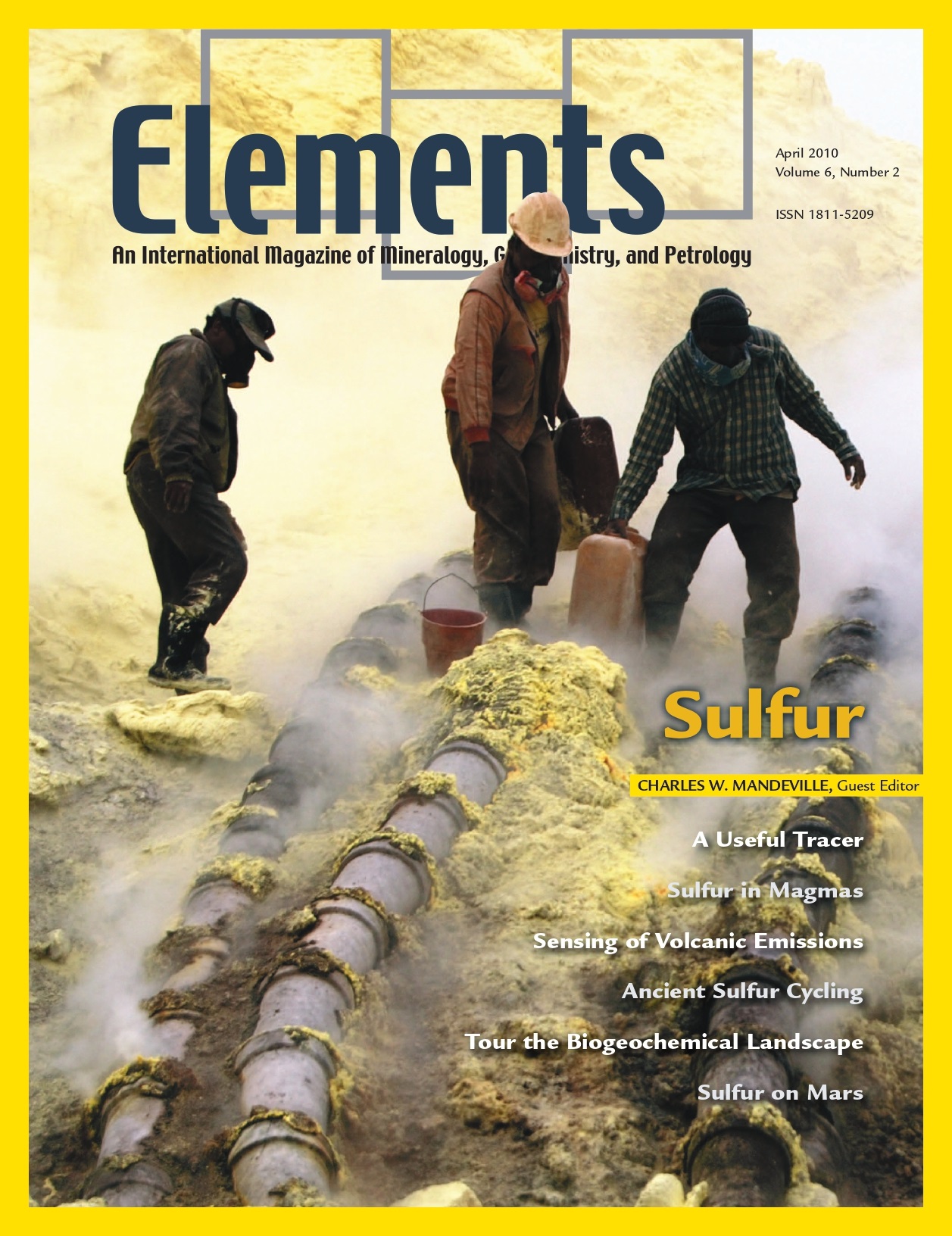Sulfur, April 2010, Vol. 6, No. 2
$20.00
This issue of Elements focuses on the geochemistry of sulfur in high-temperature, low-temperature, and biogenically mediated processes over a wide range of scales, environments, and time intervals. Sulfur’s multiple valence states (S2to S6+) allow for its participation in a large variety of geochemical and biogeochemical processes.
Sulfur
April 2010, Vol. 6, No. 2
This issue of Elements focuses on the geochemistry of sulfur in high-temperature, low-temperature, and biogenically mediated processes over a wide range of scales, environments, and time intervals. Sulfur’s multiple valence states (S2to S6+) allow for its participation in a large variety of geochemical and biogeochemical processes. Sulfur may be one of the light elements contained in the Earth’s core and may have been crucial in core formation. Sulfur is an essential component in all life on Earth. Sulfur geochemistry continues to be used in delineating the early evolution of Earth’s atmosphere and hydrosphere, as a monitor of volcanic SO2 and H2S, and as a tracer of anthropogenic sources. Recent advances in the use of multiple sulfur isotopes (32S, 33S, 34S, and 36S) and in situ isotopic measurements will allow sulfur stable isotopes to develop as vital tracers in the Earth and planetary sciences, with applications to inorganic and biogenic processes.
Why You’ll Love Elements Magazine:
- Expert Contributors: Articles written by renowned researchers in the field of geoscience.
- Engaging Content: Join a community of readers who are passionate about Elements.
- Exceptional Quality: Each issue is printed on high-quality paper with stunning visuals and detailed illustrations that bring complex scientific concepts to life.
Order your copy of the April 2010 issue of Elements magazine today and explore the complexities of sulfur.
Related products
-
Nanogeoscience, December 2008, Vol. 4, No. 6
$20.00At first glance, nano and Earth seem about as far apart as one can imagine. Nanogeoscience seems to be a word connecting opposites.
-
Glasses And Melts: Linking Geochemistry And Materials Science, October 2006, Vol. 2, No. 5
$20.00Geological interest in studying melts stems from early recognition that melts play a fundamental role in determining the physical and chemical behaviour of magmas and magmatic processes. However, due to the inherent difficulties associated with working at high temperatures, much of the geological research over the last 30 years has used quenched melts or glasses as proxies for melts themselves.
-
Phosphates And Global Sustainability, April 2008, Vol. 4, No. 2
$20.00Phosphorus is a unique element: it is essential to the existence of all living forms, and as such controls biological productivity in many terrestrial and marine environments; but when in excess, it leads to uncontrollable biological growth and water-quality problems. This has become a common environmental issue, resulting from our careless use of phosphorus in agriculture, yet phosphate ore deposits, from which fertilizers are produced, are a finite natural resource.






